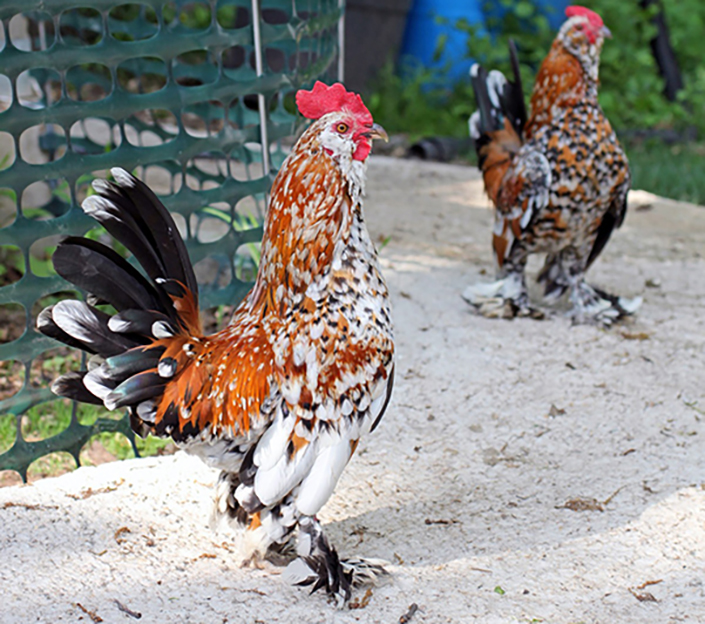Chickens and pigeons share mutation for feathered feet, researchers find

A team of researchers including Leif Andersson, a professor at the Texas A&M College of Veterinary Medicine & Biomedical Sciences, has found that parallel evolution between domesticated chickens and pigeons has resulted in regulatory mutations in the same genes that govern foot feathering in both species.
Poultry geneticists have long studied the inheritance of a prized fancy chicken breeding trait—feathered legs.
The foot feathering trait in question, known scientifically as ptilopody, can be observed in domesticated and wild avian species and is characterized by the partial or complete development of feathers on the skin of the ankles and feet.
“Foot feathering is an interesting case since, although it is a very recognizable trait that can be very easily selected to fixation in breeds, it is, in fact, not a monogenic trait, caused by a single gene,” Andersson said.
In evolution, parallel evolution is known as the independent development of similar physical traits in separate but related lineages. In other words, when faced with adaptation, nature can go to the same “genetic toolbox” to come up with new solutions.
In a study published April 28 in Molecular Biology and Evolution, Andersson and co-authors report that the same two genes, Tbx5 and Pitx1, responsible for foot feather patterning in pigeons are also responsible for foot feather patterning in domesticated chickens.

